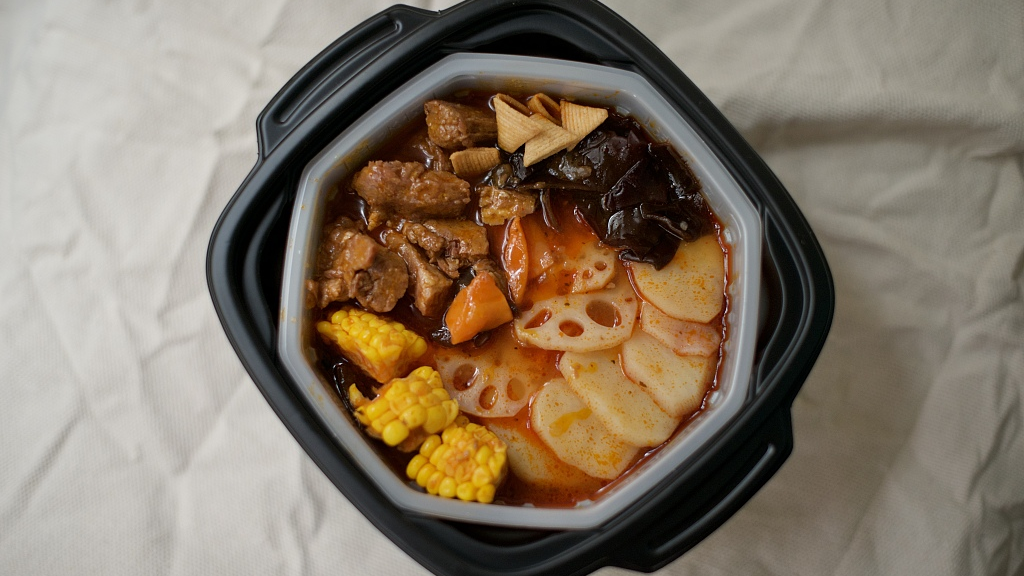In recent years, consumers' consumption behaviors have changed due to the COVID-19 pandemic, showing a shift from finished dishes to pre-cooked, ready-to-eat, or "pre-fabricated" meals. According to data released by China's Ministry of Commerce, during the 2022 National Online New Year's Festival from January 10 to February 7, semi-prepared dishes were highly popular among consumers, with sales increasing by nearly 46% year-on-year.

A self-heating hot pot. /VCG
A self-heating hot pot. /VCG
Behind China's thriving pre-made meal market
Around the early 1990s, McDonald's, KFC and other fast-food restaurants began to make forays into the Chinese market, establishing processing plants to produce minimally-processed food. In the 2000s, enterprises dealing in the more complicated semi-prepared food began to emerge. It developed quickly in the catering market and continued to flourish in the 2020s.
In 2021, the market size of China's pre-made food was 346 billion yuan ($52 billion) and is expected to reach 1 trillion yuan ($160 billion) in 2026, according to industry reports of several consulting firms. In the next few years, the annual growth rate of China's pre-made food market is expected to remain at about 20%.
As indoor dining was prohibited in many cities in the latest round of COVID-19 outbreaks, pre-made dishes became an important means for many Chinese catering enterprises to survive. According to the China Cuisine Association, during the May Day Holiday in 2022, sales of pre-made food in Beijing increased by over 270% year-on-year, and dishes such as pickled fish, beef marrow bone, and Dongpo braised pork were consumer favorites.
"Due to the normalization of pandemic prevention and control, pre-made food, including semi-finished dishes, instant dishes and frozen quick meals have become the highlights of the development of the catering industry in recent years. Such emerging consumption modes in the catering industry is underpinned by advanced technology and strong consumer demand," said Yang Liu, president of China Cuisine Association.
The prospect: A potential trillion-dollar market
Favorable policies have followed market expansion. For example, Guangdong, as an early adopter in the pre-made food market, is the first province in China to release policies on the pre-made food sector. A government policy document stated that pre-made food offers a new channel for farmers to increase their income and will boost entrepreneurship and innovation, consumption upgrade and rural vitalization.
China's National Development and Reform Commission also issued a document in January to encourage the production and sales of semi-finished products. Various provinces have also introduced policies to standardize the development of the pre-made food market.
On April 16, 2022, China Prefabricated Vegetable Industry Alliance was officially established as the pre-made food sector continued to grow.
Song Juguo, deputy director of the Agricultural Trade Promotion Center of the Ministry of Agriculture and Rural Affairs, said that this move comes as a timely response to the demands of the pre-made food industry, and will better integrate the primary, secondary and tertiary industries in rural areas.
Challenges to be addressed
Despite strong development momentum, some analysts say that China is a late comer in the semi-finished food market compared to Western countries. Other aspects like consumer acceptance, technology and market regulation also need to be improved for the Chinese market.
Some consumers also complain that although pre-made dishes are convenient and fast, taste was not as satisfactory compared with that sold in offline stores. In addition, cold-chain transportation links and product quality problems are also major concerns in the sector.

